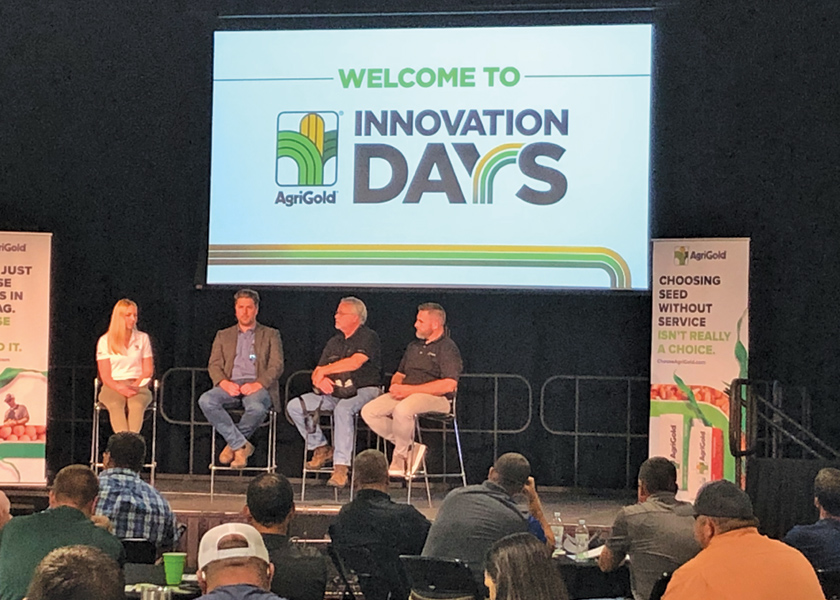Hybrid Selection: The More You Know

For years, Ken Ferrie, Farm Journal field agronomist, has encouraged seed companies to provide more specific details about hybrid characteristics and management. Here’s how Beck’s Hybrids and AgriGold are promising new ways of talking about how farmers grow corn in the near future.
Using the company’s Practical Farm Research (PFR) concept, Beck’s is extending its research to better serve growers as technology and farming practices change. Beck’s calls its approach characterizing, rather than describing, their varieties. In a sense, the effort decouples genetics from traits. It’s intended to give farmers more information to help them make crop management decisions by understanding the plant differently.
“A hybrid may be great, but if the farmer doesn’t change his practices, it may not matter,” says Jim Schwartz, Beck’s director of research, agronomy and PFR. “We want to give the farmer actionable insights, visuals and descriptions that enhance the farmer experience. Then the farmer can say, ‘What can I influence to get maximum performance?’”
In his 35 years in the business, Schwartz has seen little change in how seed varieties are described, yet plant populations, row widths, fertilizer costs and technology have rapidly advanced.
What matters most
Ferrie and his team go through thousands of yield maps every year to see what hybrid characteristics and management practices ring the bell the hardest for yield.
“I wish one of those was fertility because I’m a consultant, and I make my living soil testing and writing fertility programs. It’s important, but it’s down the list a ways,” he says.
Instead, Ferrie says the two most important factors, regardless of where the farmer is based, are:
1. Water management
2. Hybrid selection
“Unfortunately, a grower spends more time studying all the features on a new pickup than they do their hybrid selection,” he adds. “I know hybrids change pretty fast, but that’s where you can make money, understanding your leaf structure, your root structure and how it all plays together.”
Ferrie wants to see seed companies provide more specific details about a hybrid, so growers can determine whether it fits into their plans.
“When companies say a hybrid ‘stands well, yields high,’ that information is too generic for growers and today’s corn production,” he says. “We’re looking for the hybrid weakness. A good seedsman will tell you about the weakness, so you know how to manage around it. The more details you can learn on a company website or in a seed catalog coupled with your plots and their plots, the more nitty gritty you have to make better hybrid selections for the commercial acre.”
The roots tell a story
Looking more closely at a plant’s roots is one aspect of Beck’s new characterizing approach.
“If we can understand root structure, better choices result,” Schwartz says.
“For example, would one variety respond more to banding than another? We know roots signal each other. Some might be crowded in 10" rows,” he explains.
There are numerous processes that take place during the first 28 days after a corn plant has emerged, says Mike Kavanaugh, corporate product manager for AgReliant who represents the AgriGold brand.

“You’ve got your radical root that comes out; you’ve got your important seminal roots,” he says. “Most importantly, you’ve got the mesocotyl, which we refer to as the umbilical cord because the plant is still living off the seed. Some people get caught up in the physiological terms and say, ‘You don’t call the seed the mother. It’s not a weaning process.’”
On day 28 of 350 GDUs, Kavanaugh says the plant has been weaned off the seed and is ready to take off in life and do its thing.
“That’s why we call the mesocotyl the umbilical cord. When we’re diagnosing problems for growers and we’re analyzing stand establishment, that mesocotyl tells us many things,” he explains. “The radical roots tells us if there was any fertilizer burn or anhydrous burn. The mesocotyl tells us what the environment was like when it was emerging. Was it a struggle? Was there a crest? Did we get a 2" or 3" pounding rain right after planting? By going back and looking at these processes or the structures of that plant, we can tell.”
With all the root structures underneath the ground of that plant, Kavanaugh recommends planting at a minimum of 1.5" to 2.5" maximum.
“Our goal would be to plant that 1.75" to 2" day in day out,” he explains. “They’ve got adjustments on the back of the planter for a reason, and we’ve got to use them.”
Technology Helps with Research
While a dry root model and a root pit provide insight into root structure, technology could allow below-ground sensing so a farmer can see exactly how plants’ roots are growing.
At Beck’s Gibbon, Minn., research plots, a drone is mapping ear height and plant height, work that was previously done with a stick and a clipboard. It can map 23 acres in about an hour.
A camera on a combine measures corn ears at harvest, while a yield monitor gets data every three seconds with 22 data points.
Nate Firle with Beck’s is experimenting with a prototype of a 360-degree camera that could allow a farmer to see what the center of a corn field looks like using virtual reality goggles.
Sherry Newell also contributed to this story.







